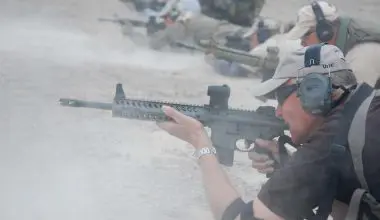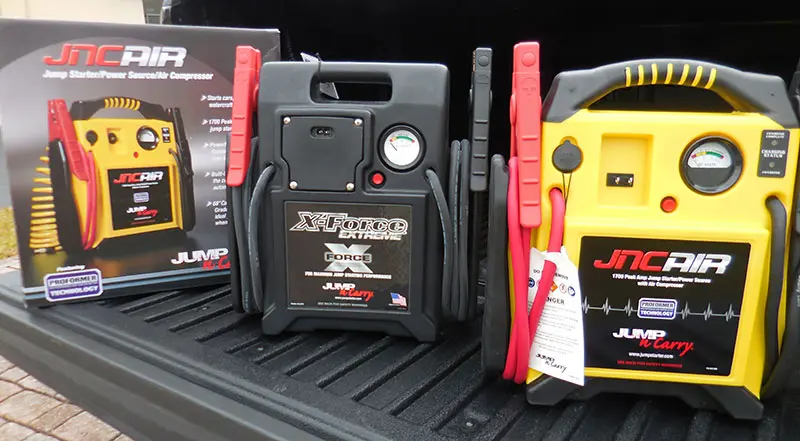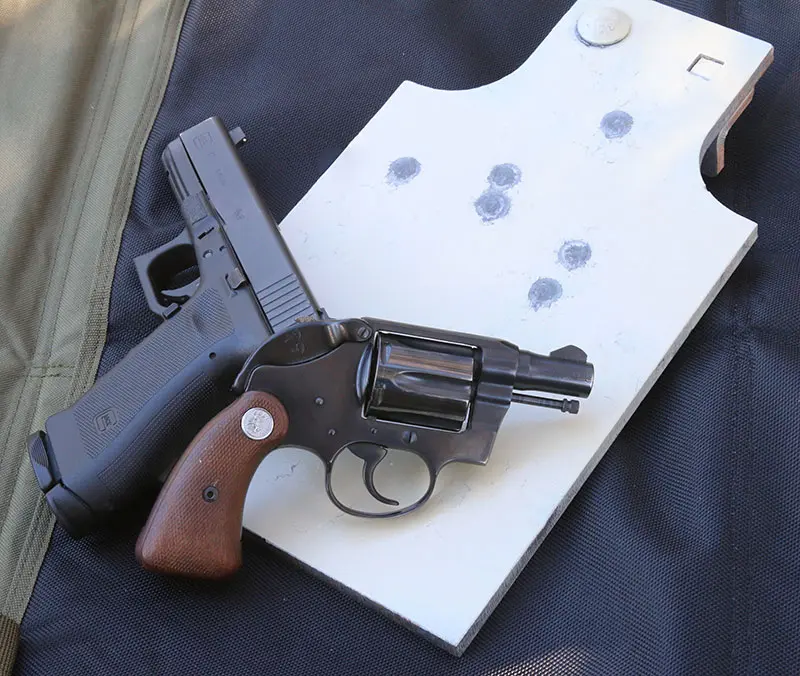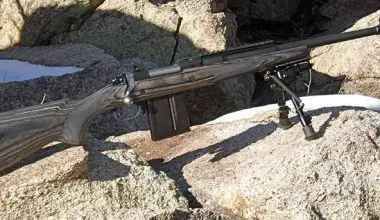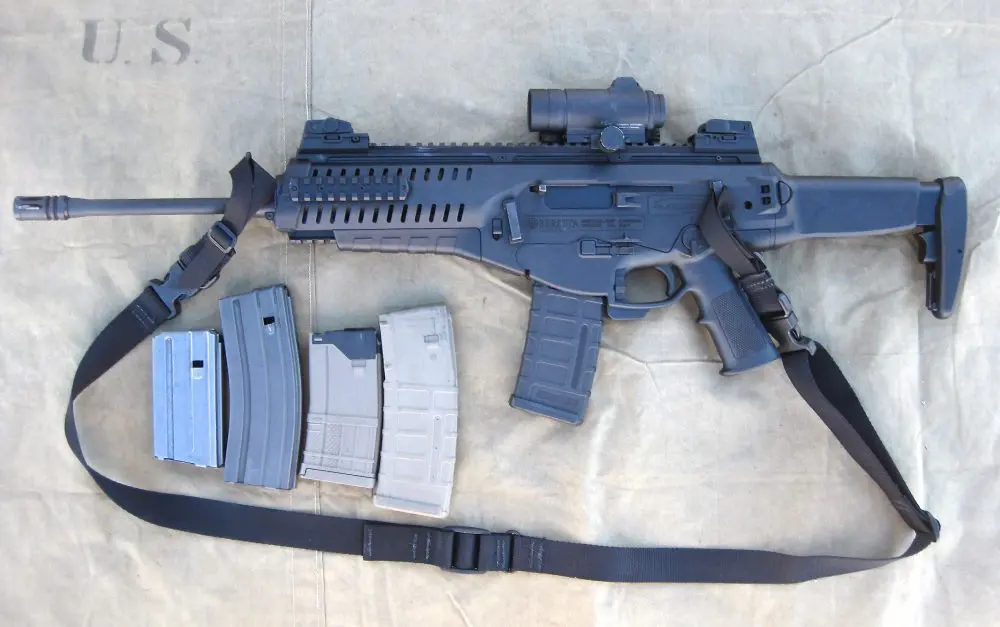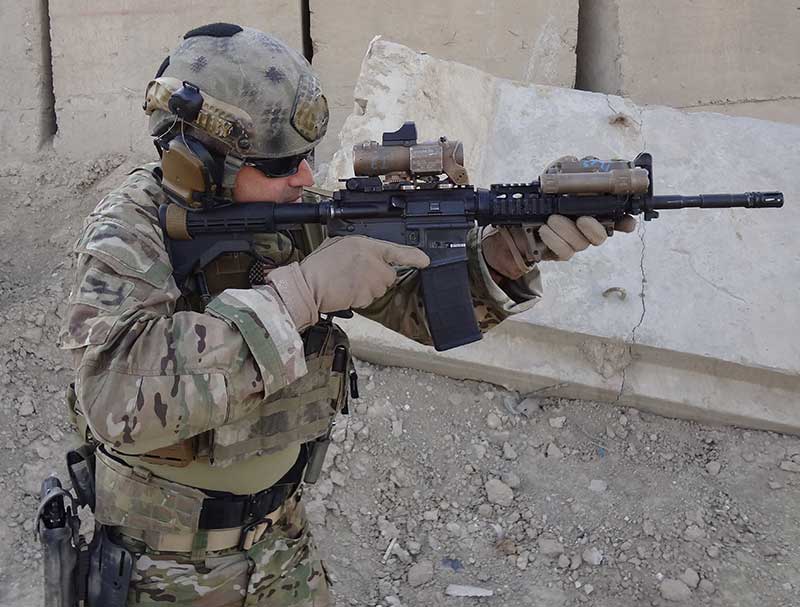
There is no doubt the M4/M4A1 is the finest carbine in the world. From the streets of Baghdad to the mountains of Afghanistan, the M4 series carbine has proven to be fully capable of providing the lethal fire needed by our nation’s warfighters. But does that mean it has no room for improvement?
The M4A1 has been around since the late 1990s and, while some changes have been made to the carbine over the years, most of these upgrades have been external and have not included any improvements to the actual functional capability of the carbine itself. So, while it has served our military well, I think it is time for some serious upgrades.
Table of Contents
QUICK HISTORY OF THE M4A1
Although created in the 1990s, the M4 relies on technology from the 1980s. That is because the military specifications (standards of performance) stating how the parts should be made (the quality), how well they should work, and how long they should last (known as milspec), all come from the M16A2. Why? That was the last time the military wrote down the performance criteria for the parts that make up the rifle.
When the M4 was being developed, these M16A2 specifications were applied to the M4. Aside from the extended feed ramps to handle M855 ammunition (green tip) and the items that were needed to turn it from rifle length to carbine, such as the barrel and telescoping buttstock, the intent was not to build a whole new operating system or new rifle, just a smaller one. These changes would accept the upcoming SOPMOD accessories. The improved performance was going to come from the SOPMOD accessories, not from better parts in the carbine.
In fact, to this day the standards of what is considered milspec by the military is still based mostly off the M16A2. That is one reason why one should not get too excited by the term milspec when it comes to AR parts. Milspec means quality, but circa 1986 quality—the last published updates for the M16A2.

That is not to say the M4/M4A1 has not had some improvements. The barrel was replaced early on with a thicker one (known as the SOCOM or heavy barrel). The buffer has been upgraded two times now with the H2. The extractor spring has also gone through several upgrades to boost its power, from three coils to five with a rubber O-ring around it, to the current thicker five-coil spring. The Army is in the process of converting M4s to M4A1s, except for the addition of an ambidextrous selector lever. Those guns are just getting switched from burst to full auto and are getting the SOCOM heavy barrel.
There is of course the well-known SOPMOD program supporting Special Operations soldiers’ M4A1s. While SOPMOD has offered numerous upgrades to the M4, those have mostly been in the form of different optics, lasers, and forearms. The actual number of items that have increased the carbine’s functional performance is only two: a match-grade trigger and the SureFire SOCOM flash hider that accepts a suppressor.
One could also count the MK18 10.3-inch upper, but then again, aside from the shorter barrel, it still relies on the same milspec parts as the full-length M4A1 upper receiver.
TOP FIVE UPGRADES
Coatings
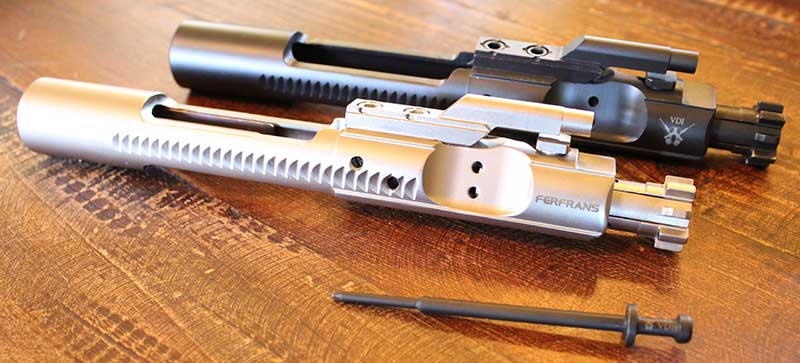
Where the M4A1 could benefit the most is a change in parts coatings. Phosphate coatings and chrome lining have performed well, but much better, more modern offerings are out there. Coatings and metal treatments such as Nickel Boron, Diamond Like Carbon (DLC), and Melonite offer much better resistance to wear, corrosion, and fouling.
They do this by providing harder and slicker coatings on the parts, which have performed better against heat and friction, helping to extend the life of the moving parts and allowing the carbine to run longer when excessively dirty and with less or no lubrication. Additionally, Melonite and Nitride treatments have shown to be better options than chrome-lined barrels, handling the heat and friction from rapid fire and extending the number of rounds a barrel can take before bore erosion degrades accuracy.
Years ago, while attending a multi-week CQB course, I wanted to see just how long the M4A1 I was using could go without cleaning and relubrication. It started off Day One clean and well lubed. By Day Seven, after about 300 to 500 rounds per day, the firing pin seized in the bolt from carbon build-up and no lubrication, causing it to light strike and not fire consistently. Just imagine how much longer that rifle may have gone had the carbine had different coatings on all the parts that were slicker and offered better protection again carbon build-up.
Full-Auto Rate
The U.S. Army is currently in the process of converting their M4s to M4A1s. One of the big differences between the two is the M4 has a three-round burst setting, and the M4A1 has full auto. Having used full auto a few times in combat to suppress enemy fire, I have found it a useful feature. But suppression is about the only thing full auto is good for. Trying to control full-auto fire in accurate bursts at anything beyond about 25 yards is very difficult.
The reason is the approximate 900 rounds-per-minute (rpm) cyclic rate. The rate of fire in full auto is way too fast for any sort of control: the recoil pulse causes the carbine to instantly start climbing up and off target no matter how short the burst. The solution is to slow down the rate of fire, which would afford the user better recoil management and control over the lengths of bursts.

The technology already exists to do this just by swapping out one part. The company Ferfrans offers a bolt carrier that, due to its special design, slows the rate of fire out of an M4A1 to around 650 rpm, at which rate the M4A1 is very controllable. I have used the Ferfrans in both an MK18 and an M4A1 and have found it slows down the rate so well that you can control the exact number of rounds per burst you want to shoot on full auto.
Even two-round bursts were totally feasible with the Ferfrans system. That could totally change the way soldiers are trained to shoot. In Special Operations, thousands of rounds and countless hours are spent first learning, then maintaining the ability to shoot extremely fast double taps and multi-shot strings. Imagine the time and ammo that could be saved by using a carbine that one could just control the number of rounds fired in full-auto bursts. A slower mechanical rate of full-auto fire permits this.
Gas System Length
The carbine-length gas system is pretty harsh on the M4. In fact, the few upgrades that have come internally to the M4A1 were because of issues directly related to the carbine-length gas system. The increase in buffer weight (now up to an H2) was to address bolt bounce from full auto. The increase in extractor-spring pressure was to address extraction issues that were related to timing issues among locking, firing, and unlocking.
While these changes have made the carbine more reliable, had the M4 started with a mid-length gas system, perhaps those changes would not have been needed. Carbines equipped with mid-length gas systems have proven more reliable due to the increased dwell time (the time between the round leaving the barrel and gas traveling down the gas tube to the bolt carrier).
Even though mid-length gas tubes are only a few inches longer, this small additional length increases the dwell time, allowing more time for the moving parts to cycle and keep up with the bursts of gas generated by the firing of the rounds.
Aside from increased reliability, there are two byproducts of a mid-length gas system. The first is that mid-length gas systems have less felt recoil, making carbines outfitted with them easier to keep on target between shots.
The added length of the system means a longer forearm on the carbine. SOCOM carbines already utilize the RAS II extended forearm, but those are limited to Special Ops troops. Going mid-length would require longer rail systems to cover them. This added length would give users more options for mounting accessories and for support-hand grip placement.
Grip and Flash Hider
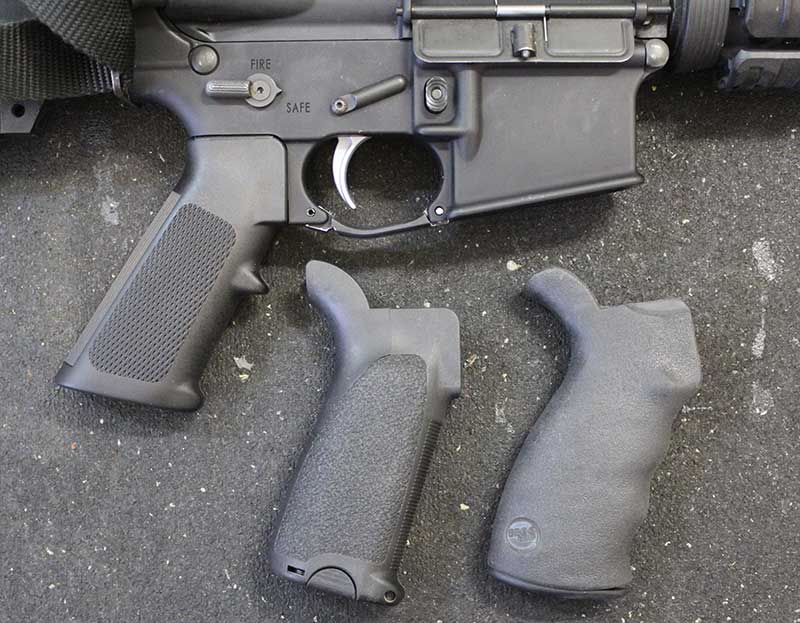
The last two items I recommend changing might seem trivial but actually do have an effect on the performance of the M4 carbine. As their names imply, they come directly off the M16A2: the A2 pistol grip and the A2 flash hider. Personally, I think both are well past their usefulness.
Even before the hundreds of aftermarket grips came to market, the A2 grip had been despised by many due to the bulge on the front that seems perfectly placed to get in the way of where your fingers naturally want to lie.
The issue I have with the A2 grip is that the straightness of the backstrap allows the firing hand to ride up toward the lower receiver. This tends to cause the shooter to have a sharp bend down in their firing hand when they are holding the rifle to make a shot. This bend can be uncomfortable and affect how the trigger finger rests on the trigger.
When the shooting hand rides up, the trigger finger tends to overpenetrate and settle past the first pad of the finger and more toward the first or second joint. This can negatively affect accuracy. Instead of a nice smooth trigger press, you could have jerking and pulling off target while pressing the trigger.
Today just about every aftermarket grip on the planet solves this issue. Many have interchangeable back and front straps so the shooter can customize the grip to their hand size and optimal shooting grip. My preferred choices are the Ergo Grip or BCM GUNFIGHTER. Both offer a much better grip on the carbine and permit proper trigger-finger placement.
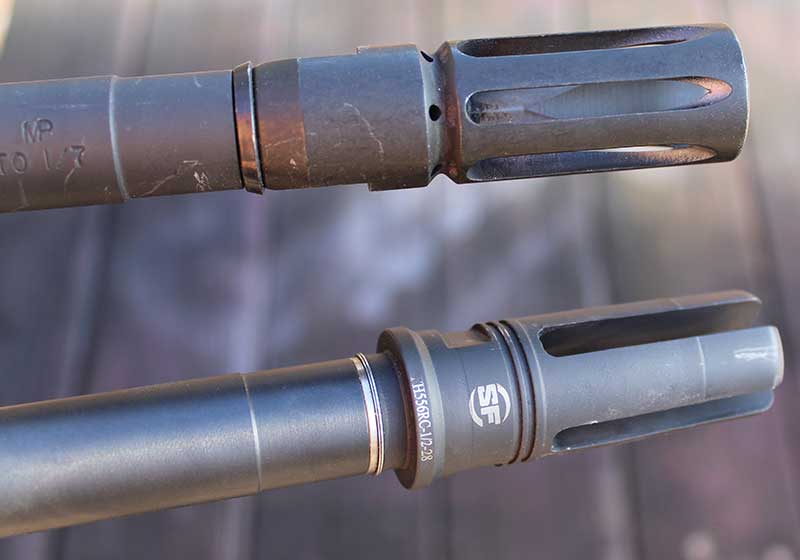
The next item, the A2 flash hider, has been the cause of more online arguments than any other part on the M4. Just bring up the subject of using a compensator over an A2 and get ready for a deluge of comments to the effect of, “Due to the lack of any real recoil for the 5.56 round, nothing is needed beyond the A2 to tame it.”
I agree that due to the excessive amount of muzzle blast (gas, flame, and noise) they generate, compensators have no place on a combat gun. But you have to admit compensators work extremely well in taking away all the recoil from the M4. That is why they are the go-to muzzle device in 3-gun competition. No muzzle rise means the shooter does not have to wait at all for the gun to settle between shots. That equals faster shooting.
I mention compensators because many flash hiders do have compensator-like qualities, as well as offering superior flash reduction compared to the A2. The flash hider is another item that was replaced on Special Operations M4A1s. The suppressor-capable SureFire SOCOM four-prong flash hider has been in use for about the last five years.
For a flash-hider upgrade, it does not have to be suppressor capable, but many modern flash hiders do offer better flash reduction, have some compensator qualities, and help reduce felt recoil. One in particular that I think would be a great choice is made by Smith & Wesson and comes on their higher-end ARs. It was actually developed for the military to begin with.
A few years back, when SOCOM was running the Small Arms Carbine Competition looking for an improved M4 carbine, Smith & Wesson designed a flash hider very similar to an A2, but with vent holes built into the top of it that redirect the gas up and out, helping to reduce both flash and felt recoil.
Like many other stock items on the M4, it truly does not matter which flash hider is used to replace the A2, as just about every modern flash hider outperforms it.
OVERALL BENEFITS
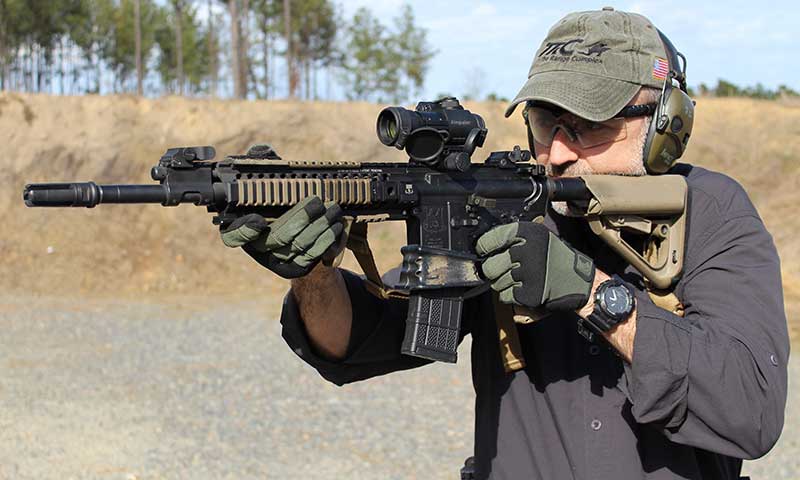
One plus if there were a total overhaul to the M4 is that whatever is chosen to replace parts on the basic M4 would become the new standard of milspec. This would hopefully result in AR manufacturers upgrading all their basic-model ARs to match the new milspec criteria, thus raising the overall quality level of ARs.
The list of items I have selected to be replaced is by no means complete. Another option that should be considered is going gas piston, as many Special Operations units and some conventional units have opted to do with the HK416. Or maybe even a complete caliber change (as rumored to be being offered) on SOCOM’s new URG-1 (upper receiver group) project. That is in addition to a new flash hider (the SureFire War Comp) and mid-length gas system.
I started off this piece praising the M4 series of carbines. It has no doubt performed well during the more than 17 years of conflict our military has been involved in. Now I know the saying, “If it ain’t broke, don’t fix it.” But just because it has performed well does not mean it cannot be improved.
We are not driving the same cars, using the same phones or TVs or countless other items from 17 years ago. Why should our soldiers be using the same carbine? The technology already exists—it just needs to be applied to the M4. Doing so will ensure that our military members still have the finest carbine in the world.
Jeff Gurwitch is a retired Special Forces Soldier who served 26 years in the United States Army (18 years with Special Forces). He served in the First Gulf War, three tours OIF, and three tours OEF. He is an avid competitive shooter, competing in USPSA, IDPA, and 3-Gun matches.
SOURCES
BRAVO COMPANY USA, INC.
(877) BRAVO-CO
www.bravocompanyusa.com
ERGO GRIP
(877) 281-3783
www.ergogrips.net
FERFRANS
(626) 893-8155
www.ferfrans.net
SMITH & WESSON
(800) 331-0852
www.smith-wesson.com
SUREFIRE, LLC
(800) 828-8809
www.surefire.com

